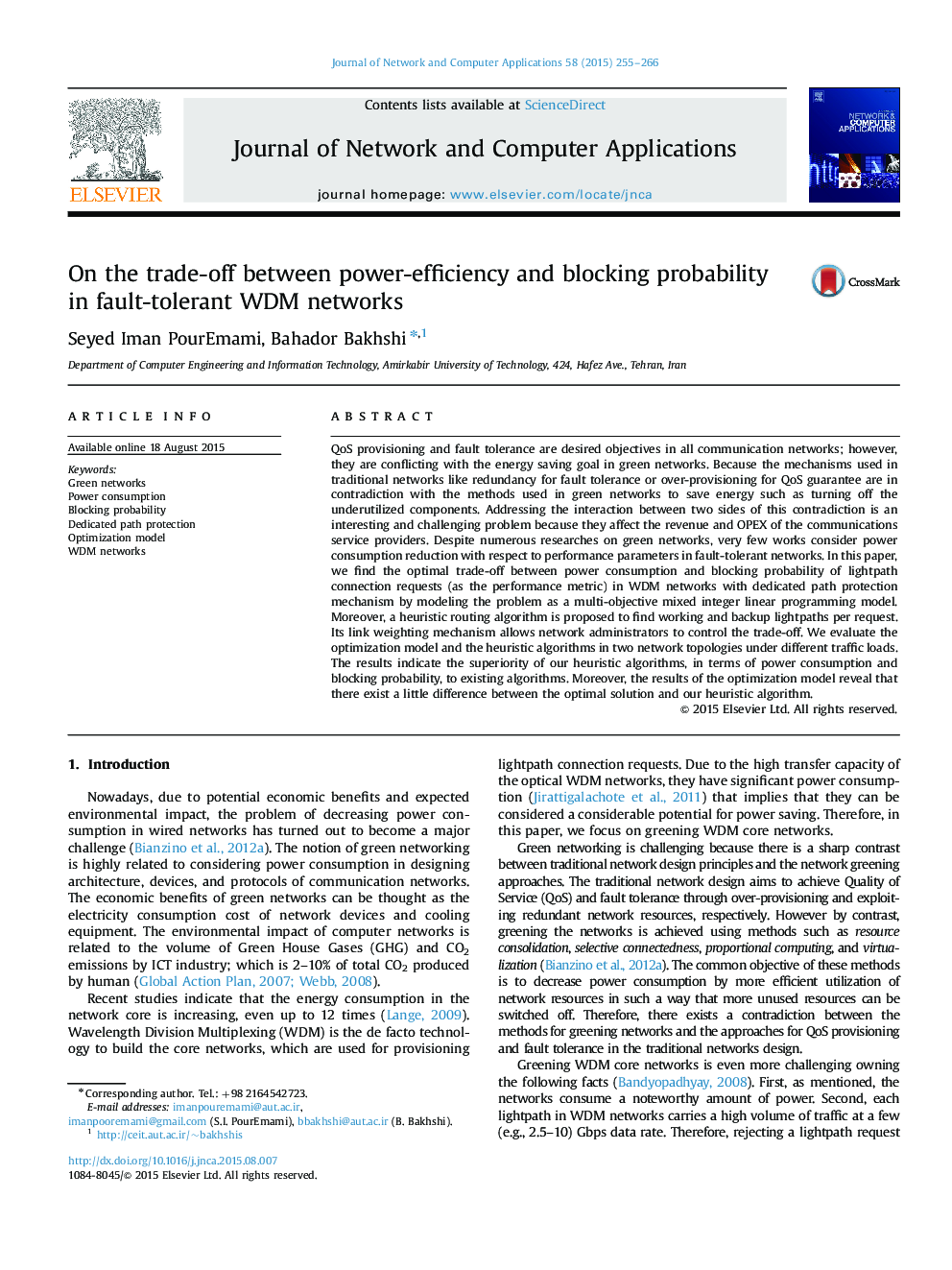| Article ID | Journal | Published Year | Pages | File Type |
|---|---|---|---|---|
| 459823 | Journal of Network and Computer Applications | 2015 | 12 Pages |
•A multi-objective ILP model to make trade-off between power consumption and blocking probability.•A novel routing algorithm for provisioning lightpaths by appropriate weighting of network links.•Evaluation of trade-off between power and blocking by heuristic algorithms, in comparison to ILP model.
QoS provisioning and fault tolerance are desired objectives in all communication networks; however, they are conflicting with the energy saving goal in green networks. Because the mechanisms used in traditional networks like redundancy for fault tolerance or over-provisioning for QoS guarantee are in contradiction with the methods used in green networks to save energy such as turning off the underutilized components. Addressing the interaction between two sides of this contradiction is an interesting and challenging problem because they affect the revenue and OPEX of the communications service providers. Despite numerous researches on green networks, very few works consider power consumption reduction with respect to performance parameters in fault-tolerant networks. In this paper, we find the optimal trade-off between power consumption and blocking probability of lightpath connection requests (as the performance metric) in WDM networks with dedicated path protection mechanism by modeling the problem as a multi-objective mixed integer linear programming model. Moreover, a heuristic routing algorithm is proposed to find working and backup lightpaths per request. Its link weighting mechanism allows network administrators to control the trade-off. We evaluate the optimization model and the heuristic algorithms in two network topologies under different traffic loads. The results indicate the superiority of our heuristic algorithms, in terms of power consumption and blocking probability, to existing algorithms. Moreover, the results of the optimization model reveal that there exist a little difference between the optimal solution and our heuristic algorithm.
